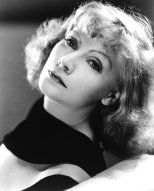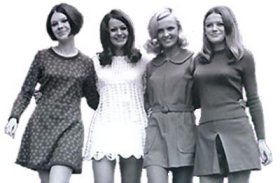Home>>Cosmetics>>Make-up in the Pursuit of Beauty
Make-up in the Pursuit of Beauty
The technicolour world of cosmetics offers endless possibilities of enhancing (or disguising?) the canvas given by nature. Although glossy lipsticks, shimmering powders and creamy potions are now a billion-dollar global industry in the twenty-first-century, the opportunities they offer for changing appearance have been exploited by both men and women throughout history. It is perhaps less obvious why make-up is believed to have the power of conferring beauty on its wearer, however. Fashionable trends in cosmetic application show great variability across time, and what may once have been seen to enhance natural beauty often causes revulsion in later generations.
Make-up in Ancient Civilisations
 The majority of cosmetic products and treatments used today would not have been unfamiliar to the Ancient Egyptians. Sweet-scented oils, rouges for lips and coloured powders find their modern equivalence in perfumes, lipsticks and eyeshadows. The roots of the beauty industry can also be traced back to the time of the Pharaohs, around 3000 BC. Cosmetic makers sold palettes of coloured pigments, yellow and orange ochre, green eyeshadow made of verdigris, and kohl made of galena. Many products were expensive and make-up was therefore regarded as a privilege or indulgence of the wealthy classes in Egyptian society. Jars of cosmetics formed part of the royal funerary equipment and examples were discovered in the tombs of three ladies of the court of Tuthmosis III, buried around 1400 BC.
The majority of cosmetic products and treatments used today would not have been unfamiliar to the Ancient Egyptians. Sweet-scented oils, rouges for lips and coloured powders find their modern equivalence in perfumes, lipsticks and eyeshadows. The roots of the beauty industry can also be traced back to the time of the Pharaohs, around 3000 BC. Cosmetic makers sold palettes of coloured pigments, yellow and orange ochre, green eyeshadow made of verdigris, and kohl made of galena. Many products were expensive and make-up was therefore regarded as a privilege or indulgence of the wealthy classes in Egyptian society. Jars of cosmetics formed part of the royal funerary equipment and examples were discovered in the tombs of three ladies of the court of Tuthmosis III, buried around 1400 BC. Different trends in changing social and economic contexts
From the black kohl-eyed look of Cleopatra in Egypt to the white arsenic-faced look of Elizabethan courtiers in England, the use of cosmetics has a long association with wealth and power. It is striking that changes in the prevailing social and economic contexts lead the way for similar changes in the styles of make-up application considered to enhance beauty. For example, whilst a pale complexion provided evidence to an Elizabethan audience that a person was wealthy enough to stay indoors, tanned complexions in the late twentieth-century gave a ‘just-returned-from-holiday-in-the-Med’ look. Social and economic circumstances seem therefore to have a significant effect on the way in which make-up is fashionably applied. An appearance of beauty is closely linked to social distinction, prestige and power.
Make-up as liberation and escapism
 However, trends in the application of make-up are influenced by more factors than simply those of wealth. In the late Victorian era, cosmetics were considered the mark of a licentious lifestyle and were shunned by all but the strippers and prostitutes. Against this puritan background, the stage was set for the re-emergence of make-up as a gesture of women’s liberation from the 1920s onwards. Blood red lipstick and painted nails no longer signalled a ‘painted woman’. Furthermore, in a proliferation of mass-marketing and advertising, female beauty was perceived through the lens of the cinema camera. With the rise of the celebrity, icons such as Greta Garbo and Marlene Dietrich set the standard of a glamorous existence far away from the mundane realities of everyday life. Make-up quickly developed as a form of escapism, with women using products such as Starlet Shadow and Cinema Sable in their aspirations to emulate their Hollywood role models.
However, trends in the application of make-up are influenced by more factors than simply those of wealth. In the late Victorian era, cosmetics were considered the mark of a licentious lifestyle and were shunned by all but the strippers and prostitutes. Against this puritan background, the stage was set for the re-emergence of make-up as a gesture of women’s liberation from the 1920s onwards. Blood red lipstick and painted nails no longer signalled a ‘painted woman’. Furthermore, in a proliferation of mass-marketing and advertising, female beauty was perceived through the lens of the cinema camera. With the rise of the celebrity, icons such as Greta Garbo and Marlene Dietrich set the standard of a glamorous existence far away from the mundane realities of everyday life. Make-up quickly developed as a form of escapism, with women using products such as Starlet Shadow and Cinema Sable in their aspirations to emulate their Hollywood role models. Psychological benefits of make-up
Whilst make-up plays a role in the perceptions we make of another person’s socio-economic status therefore, it can also be used as an expression of our own identity.
 With gold nail varnish by Esteé Lauder, blue eyeshadow by Mary Quant, kohl eyeliner, caked blusher and cherry-flavoured roll-on lip gloss, 1960s’ girls used the contents of their vanity cases as membership badges of a youthful, mini-skirted rebellion. Trends in cosmetic use are imbued with social contextual cues that help to construct a sense of the person we would like to be. As a sign of social identity, make-up expresses group affiliations and connections with a subculture. As a sign of personal identity, make-up symbolizes a person’s character and personality through signifying their core values, qualities and attributes.
With gold nail varnish by Esteé Lauder, blue eyeshadow by Mary Quant, kohl eyeliner, caked blusher and cherry-flavoured roll-on lip gloss, 1960s’ girls used the contents of their vanity cases as membership badges of a youthful, mini-skirted rebellion. Trends in cosmetic use are imbued with social contextual cues that help to construct a sense of the person we would like to be. As a sign of social identity, make-up expresses group affiliations and connections with a subculture. As a sign of personal identity, make-up symbolizes a person’s character and personality through signifying their core values, qualities and attributes.Links
Home>>Cosmetics>>Make-up in the Pursuit of Beauty

